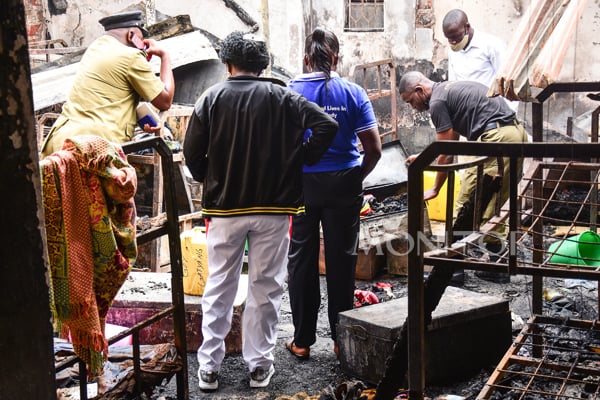High dust levels in Tilenga is due to natural factors - PAU

PAU says the high levels of dust are a result a prolonged dry spell that is affecting much of Buliisa District. PHOTO | COURTESY
What you need to know:
- Reports had indicate that members from five villages neighbouring the oil Buliisa District had petitioned the Ministry of Health in regard to alleged air pollution generated by construction works for the Tilenga projects.
The Petroleum Authority of Uganda (PAU) has said the current high levels of dust in the Tilenga oil project area are a result of strong winds that have been worsened by a prolonged dry spell within Buliisa District and surrounding areas.
While reacting to claims of population as a result of the Tilenga oil project activities in Buliisa District, PAU said in a statement that the high level of dust were not only affecting the Tilenga Project Industrial site area but were spread to a wider landscape within Buliisa District.
READ: Total taps ThreeWays firm for Shs140b logistics tender
PAU noted that reports had indicate that community members from five villages neighbouring the oil Central Processing Facility in Buliisa District had petitioned the Ministry of Health in regard to alleged air pollution that had been suspected to be generated by the ongoing construction works for the Tilenga project.
However, PAU said that while it empathises with the impacted communities, it was not true that there was pollution resulting from construction works within the site area.
PAU also said that whereas, there are ongoing construction works in Buliisa District, at the Tilenga Project Industrial Area, which will host the Central Processing Facility, Construction Support Base, Construction Camps and Drilling Support Base, they were not in any way polluting the environment as had been alleged.
Construction works at the Tilenga Project Industrial Area commenced in May 2021 and constitute part of the early works for the enabling infrastructure to be put in place for the Tilenga project.
Due consideration
PAU also noted that all Tilenga project activities, like other oil and gas activities in other parts of the Albertine Graben, were being undertaken with due consideration to the environment and host communities, noting that to deal with this challenge, the frequency of water spraying would be increased to suppress the dust generated as well as scale down site activities that generate high dust levels and limit vehicle movements within and outside the operation areas.
“The situation being witnessed is largely temporary and is worsened by natural factors,” PAU said, noting that the mitigation measures are being continuously implemented to reduce the dust emissions, and it also is expected that the situation shall normalise once the dry spell and strong winds ease.
ALSO READ: Making sense of oil contracts




